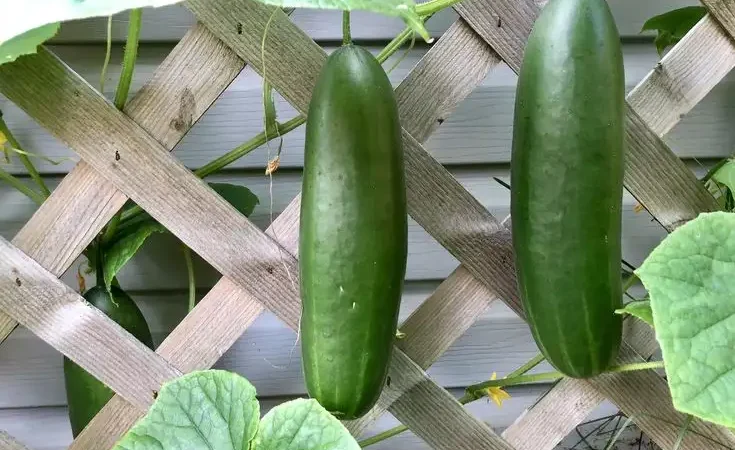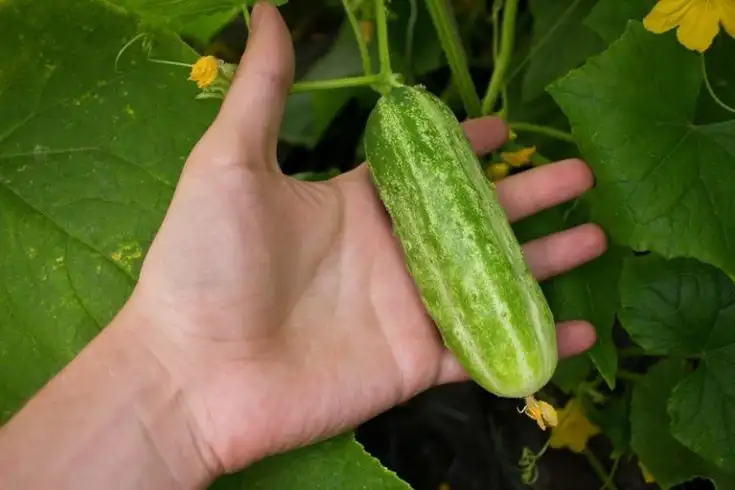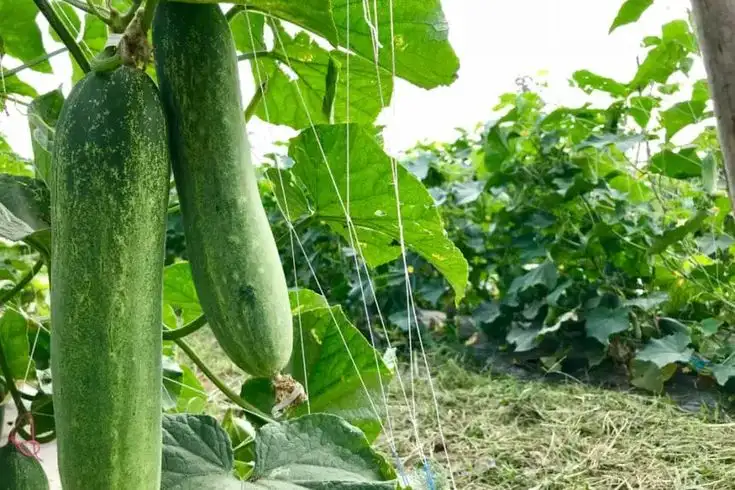If you want to grow juicy, flavorful, and high-yielding cucumbers, choosing the best fertilizers for cucumber plants is essential. Fertilizers play a vital role in giving your cucumber vines the nutrients they need for lush growth, strong roots, and abundant fruit production.
In this guide, we’ll explore the most effective types of fertilizers, how and when to apply them, and natural alternatives for eco-friendly gardeners. Whether you grow cucumbers in containers or garden beds, this article will help you get the best harvest possible.
Why Fertilizers Matter for Cucumber Growth

Cucumbers are fast-growing, nutrient-demanding plants. They thrive best when the soil is rich in nitrogen, phosphorus, and potassium three key nutrients known as N-P-K.
Moreover, cucumbers also need calcium, magnesium, and micronutrients to prevent problems like yellowing leaves or misshapen fruits. Therefore, using the right fertilizer becomes essential for strong, steady growth.
In addition, proper fertilization helps the plants absorb water and nutrients more efficiently. Consequently, cucumber vines grow faster and remain healthier throughout the season. Furthermore, the right feeding routine boosts the overall resilience of your plants.
Using the right fertilizer ensures:
-
Faster vine and leaf growth, which supports photosynthesis and energy production.
-
Stronger flowering and fruit set, so your garden yields more cucumbers.
-
Better taste and longer harvest periods, giving you fresh produce for months.
However, without proper feeding, cucumber plants may look weak, eventually produce fewer fruits, or even attract pests and diseases. Thus, consistent nutrition plays a major role in achieving vibrant vines. Besides, balanced fertilizers help prevent nutrient deficiencies before they appear. Ultimately, when you feed your cucumber plants wisely, you’ll enjoy healthier growth, higher yields, and tastier results.
Types of Fertilizers for Cucumber Plants
When selecting the best fertilizers for cucumber plants, it’s important to understand the three main categories available: organic, synthetic, and slow-release fertilizers.
1. Organic Fertilizers
Organic fertilizers are perfect for gardeners who prefer natural options. They improve soil health and support long-term plant growth.
Best organic fertilizers for cucumbers include:
-
Compost: Adds essential nutrients while improving soil structure.
-
Manure (well-rotted): Provides nitrogen and boosts soil fertility.
-
Fish emulsion: Encourages rapid vine growth.
-
Worm castings: Enhance root development and water retention.
These organic choices not only feed your plants but also encourage beneficial soil microbes.
2. Synthetic Fertilizers
Synthetic or chemical fertilizers deliver nutrients quickly. They are ideal when cucumbers show signs of nutrient deficiency or slow growth.
Recommended N-P-K ratios for cucumbers:
-
10-10-10: Balanced fertilizer for all stages of growth.
-
5-10-10: Great for fruiting stage—more phosphorus for better yield.
-
20-20-20: Suitable for heavy feeders or fast results.
Although synthetic fertilizers work faster, overuse can harm the soil and cause nutrient burn. Always follow the label directions.
3. Slow-Release Fertilizers
Slow-release fertilizers provide nutrients gradually over several weeks.
They reduce the need for frequent feeding and prevent over-fertilization.
Examples include:
-
Osmocote Vegetable & Flower Smart-Release
-
Jobe’s Organics Vegetable Spikes
These are perfect for busy gardeners or those who grow cucumbers in containers.
Best Time to Fertilize Cucumber Plants

Timing is everything when it comes to feeding your plants.
Here’s a simple schedule:
-
Before Planting: Mix compost or a balanced fertilizer into the soil.
-
After Seedlings Emerge (2–3 weeks): Use a nitrogen-rich fertilizer to encourage leafy growth.
-
During Flowering and Fruiting: Switch to a fertilizer with higher phosphorus and potassium (like 5-10-10).
-
Mid-Season Boost: Add compost tea or fish emulsion every 2–3 weeks for ongoing nutrition.
Transitioning between fertilizer types at different growth stages ensures your cucumbers always get what they need most.
Signs Your Cucumber Plants Need More Fertilizer
Even with good care, plants can show signs of nutrient stress. Watch for these indicators:
-
Yellowing leaves: Lack of nitrogen.
-
Poor flowering or fruit drop: Deficiency in phosphorus.
-
Weak stems and curled leaves: Potassium or magnesium shortage.
-
Small, bitter cucumbers: Nutrient imbalance or irregular watering.
If you notice these symptoms, apply a balanced fertilizer immediately and improve your watering routine.
Top 5 Best Fertilizers for Cucumber Plants
Let’s look at some of the top-rated options that gardeners swear by:
1. Miracle-Gro Water Soluble Vegetable Food (24-8-16)
A fast-acting fertilizer that promotes lush foliage and abundant fruiting.
Perfect for both garden beds and containers.
2. Jobe’s Organics Vegetable & Tomato Fertilizer (2-5-3)
Certified organic and enriched with beneficial microbes for improved soil health. Ideal for sustainable gardening.
3. Espoma Garden-Tone (3-4-4)
Slow-release organic fertilizer with natural ingredients like bone meal and alfalfa meal. Excellent for long-term feeding.
4. Dr. Earth Home Grown Vegetable Fertilizer (4-6-3)
Non-GMO, pet-safe, and made with probiotics to strengthen plant immunity.
5. Fish Emulsion Fertilizer (5-1-1)
A liquid organic option for quick green growth and stronger vines, especially during the early stages. These fertilizers stand out because they offer balanced nutrition and consistent results. For gardeners who also grow succulents, learning about the right fertilizer for cactus plants can help maintain healthy growth and prevent nutrient deficiencies across all your plants.
How to Apply Fertilizer Correctly
Proper application ensures that your cucumber plants fully benefit from the nutrients.
Step-by-step tips:
-
Loosen the soil around the plants.
-
Apply fertilizer 2–3 inches away from the base.
-
Water immediately after fertilizing to help nutrients absorb.
-
Avoid sprinkling fertilizer directly on leaves.
Using these simple methods prevents root burn and supports steady, healthy growth.
Natural Alternatives and DIY Fertilizers
If you prefer a DIY approach, here are some natural alternatives:
-
Banana peels: Add potassium for better fruiting.
-
Eggshells: Provide calcium to prevent blossom-end rot.
-
Epsom salt solution: Improves magnesium levels and leaf color.
-
Compost tea: A gentle nutrient boost throughout the growing season.
Transitioning to natural fertilizers is great for long-term soil improvement and eco-friendly gardening. For instance, learning about pine tree fertilization can help you understand how organic nutrients support healthy plant growth and sustainable soil management.
Common Mistakes to Avoid

Even experienced gardeners can make these errors:
-
Over-fertilizing, which burns roots.
-
Using only nitrogen fertilizers (causes too many leaves, few fruits).
-
Forgetting mid-season feeding.
-
Ignoring pH balance (ideal range is 6.0–6.8).
Avoiding these mistakes ensures your cucumbers stay healthy and productive.
FAQs
1. How often should I fertilize cucumber plants?
Fertilize every 2–3 weeks during active growth. Adjust frequency depending on soil quality and plant health.
2. Can I use tomato fertilizer for cucumbers?
Yes, most tomato fertilizers work well since they have similar nutrient needs, especially during flowering.
3. Are coffee grounds good for cucumbers?
Yes, coffee grounds add nitrogen and improve soil structure, but use them sparingly.
4. What’s the best fertilizer for cucumber seedlings?
A mild liquid fertilizer like fish emulsion or compost tea helps young seedlings develop strong roots.
5. Should I stop fertilizing before harvest?
No, but reduce the frequency once fruits mature to avoid excessive leafy growth.
Conclusion
Choosing the best fertilizers for cucumber plants can make the difference between a weak crop and a thriving harvest. However, success depends not only on what you use but also on how and when you apply it. Moreover, understanding your soil’s condition helps you choose the right nutrients.
Additionally, remember to feed your cucumbers regularly, as consistent nutrition ensures strong roots and steady growth. Furthermore, adjusting nutrients during each growth stage supports flowering and fruiting effectively. Consequently, your plants become more resistant to pests and diseases. For more insights on nurturing healthy indoor plants, check out this detailed guide on growing aloe vera indoors, which highlights proper care and feeding techniques that can also inspire your approach to cucumbers.
Instead of over-fertilizing, maintain balance to prevent root burn and nutrient loss. Also, keep your soil moist to help fertilizers absorb properly. Meanwhile, watch for yellow leaves or poor fruiting as signs of deficiency. Thus, early attention saves your plants from stress.
Equally, both organic and synthetic options can yield great results when used correctly. Finally, test your soil occasionally to track its health. Next, apply compost or liquid feed as a mid-season boost. Besides, patience and consistency go a long way in cucumber care. Overall, by following these tips and using high-quality fertilizers, you’ll enjoy a garden full of crisp, juicy cucumbers all season long.


















